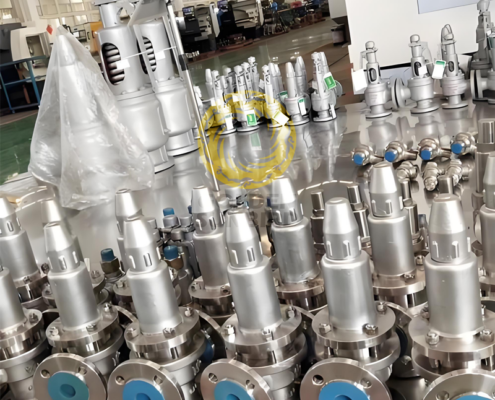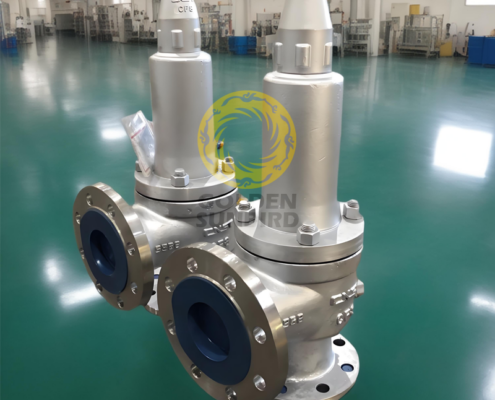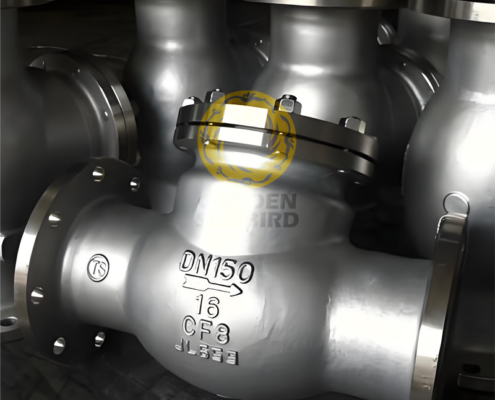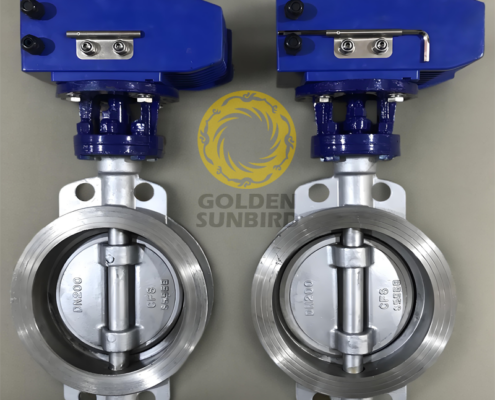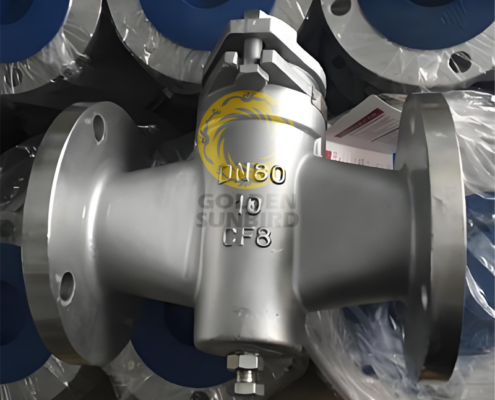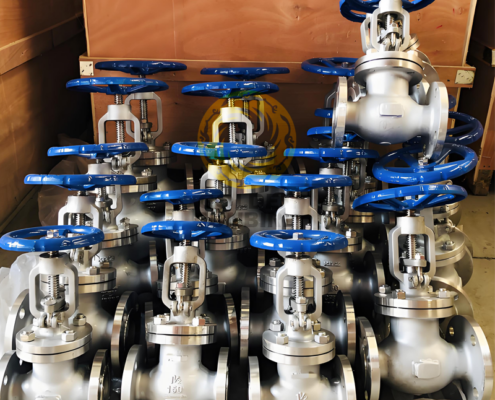Golden Sunbird Metals is a professional supplier of stainless steel valves. We offer high-quality stainless steel valves at wholesale prices for oil and gas, chemical processing, power generation, water and wastewater treatment, marine, pharmaceutical, food processing, HVAC, mining and minerals, pulp and paper, fire protection systems, and nuclear, serving as critical components for controlling and directing the flow of fluids in piping systems and ensuring leak-tight seals in corrosive environments, high-temperature conditions, and applications requiring resistance to stress corrosion cracking and erosion. Our products stand out for their durability, corrosion resistance, and superior performance under challenging environments. If you want to buy stainless steel valves in bulk or find a supplier of customized stainless steel valves or a solution company, please don’t hesitate to contact us at [email protected].
FAQs
What are stainless steel valves and why are they used?
Stainless steel valves are made from stainless steel, a material known for its excellent corrosion resistance, strength, and durability. These valves are widely used in various industries because they can perform reliably in demanding environments. Here’s a detailed look at stainless steel valves and the reasons for their use:
What Are Stainless Steel Valves?
Stainless steel valves are components used to control the flow of fluids (liquids, gases, and slurries) in a system. They are made from stainless steel, an alloy primarily composed of iron, carbon, and chromium, with other elements such as nickel, molybdenum, and titanium added to enhance specific properties.
Types of Stainless Steel Valves
- Ball Valves: Use a spherical disc to control flow; ideal for quick shut-off applications.
- Gate Valves: Utilize a sliding gate to open or close the valve; suitable for on/off control.
- Globe Valves: Use a movable plug to regulate flow; excellent for throttling.
- Butterfly Valves: Feature a rotating disc used for fast shut-off.
- Check Valves: Allow fluid to flow in one direction only, preventing backflow.
- Needle Valves: Provide precise flow control; used in fine adjustments of flow rates.
- Diaphragm Valves: Use a flexible diaphragm to control flow; ideal for corrosive and abrasive fluids.
Why Are Stainless Steel Valves Used?
- Corrosion Resistance
High Chromium Content: Stainless steel’s chromium content forms a passive chromium oxide layer, protecting against corrosion and rust.
Resistance to Chemicals: Suitable for environments exposed to acids, bases, and other corrosive substances. - Strength and Durability
High Tensile Strength: Stainless steel can withstand high pressures and mechanical stress.
Longevity: Durable and long-lasting, reducing the need for frequent replacements and maintenance. - Temperature Resistance
Wide Operating Range: These can function effectively in high and low temperatures, making them versatile for various applications.
Thermal Stability: Maintains structural integrity under thermal cycling and extreme temperature conditions. - Hygiene and Cleanability
Smooth Surface: They are easy to clean, making them suitable for sanitary applications in the food, beverage, and - pharmaceutical industries.
Non-porous: Does not harbor bacteria or contaminants, ensuring high levels of hygiene. - Mechanical Properties
Ductility and Toughness: Can be shaped and machined into precise components while maintaining toughness.
Wear Resistance: Resistant to wear and tear, beneficial in high-use applications. - Aesthetic Appeal
Polished Finish: Often used in applications where appearance matters, such as in decorative fixtures and appliances.
Applications of Stainless Steel Valves
- Chemical and Petrochemical: Handling corrosive chemicals and high-temperature processes.
- Oil and Gas: Used in pipelines, refineries, and offshore platforms for their durability and resistance to harsh environments.
- Water Treatment: Suitable for potable and wastewater systems due to corrosion resistance.
- Food and Beverage: Ensuring sanitary conditions and preventing contamination.
- Pharmaceutical: Used in sterile environments for high-purity applications.
- Power Generation: In nuclear and thermal power plants, reliability under extreme conditions is crucial.
- Marine: Resistant to saltwater corrosion, ideal for marine and offshore applications.
Can you customize stainless steel valves to specific designs?
Yes, stainless steel valves can be customized to meet specific design requirements. Customization ensures that the valves perform optimally for particular applications and can address unique challenges in different industries. Here’s an overview of how stainless steel valves can be customized:
Customization Options for Stainless Steel Valves
- Material Selection
- Valve Types
- Dimensions and Sizes
- Surface Treatments and Finishes
- Connection Types
- Pressure and Temperature Ratings
- Actuation Methods
- Flow Characteristics
- Special Features
- Compliance and Certifications
- Environmental Considerations
Process of Customizing Stainless Steel Valves
- Requirement Analysis
- Design and Engineering
- Material Selection
- Manufacturing
- Testing and Quality Assurance
- Certification
- Installation and Support
What types of stainless steels are available for valves?
Stainless steel valves are used in various applications across many industries due to their corrosion resistance, strength, and durability. Different types of stainless steel are chosen based on the application’s specific requirements, such as the controlled fluid type, temperature, pressure, and environmental conditions. Here are some commonly used types of stainless steels for valves:
Types of Stainless Steels for Valves
1. Austenitic Stainless Steel
- 304 Stainless Steel: General-purpose valves, food and beverage industry, and mildly corrosive environments.
- 316 Stainless Steel: Marine environments, chemical processing, and pharmaceutical industries.
- 316L Stainless Steel: Pharmaceutical and food processing industries where welding is required.
- 317 Stainless Steel: Chemical and petrochemical processing, pulp and paper industries.
2. Ferritic Stainless Steel
- 430 Stainless Steel: Less demanding environments, decorative applications, and food processing equipment.
3. Martensitic Stainless Steel
- 410 Stainless Steel: Cutlery, steam and gas turbine blades, and valve components where high strength is required.
- 420 Stainless Steel: Surgical instruments and valve components require high hardness.
4. Duplex Stainless Steel
- 2205 Duplex Stainless Steel: Oil and gas industry, chemical processing, and marine applications.
- 2507 Super Duplex Stainless Steel: Offshore platforms, chemical processing, and desalination plants.
5. Precipitation-Hardening Stainless Steel
- 17-4 PH Stainless Steel: Aerospace, nuclear waste casks, and valve components requiring high strength and toughness.
How does Golden Sunbird Metals ensure the quality of its stainless steel valves?
Golden Sunbird Metals ensures the quality of its stainless steel valves through rigorous quality assurance measures. These include adhering to industry standards, conducting thorough testing, and ensuring compliance with certifications like ISO. The company specializes in producing, selling, and exporting various stainless steel products, ensuring each meets the specifications.
What industries benefit from using stainless steel valves?
Stainless steel valves are highly versatile and offer excellent performance in various applications due to their corrosion resistance, strength, and durability. Many industries benefit from using stainless steel valves, including:
1. Oil and Gas Industry: Upstream, Midstream, Downstream
2. Chemical and Petrochemical Industry: Chemical Processing Plants, Petrochemical Plants
3. Water and Wastewater Treatment: Municipal Water Systems, Wastewater Treatment Plants
4. Food and Beverage Industry: Food Processing, Beverage Production
5. Pharmaceutical and Biotech Industry: Pharmaceutical Manufacturing, Biotechnology Processes
6. Pulp and Paper Industry: Paper Mills, Pulp Processing
7. Power Generation Industry: Nuclear Power Plants:, Fossil Fuel Power Plants, Renewable Energy
8. Marine and Shipbuilding Industry: Marine Vessels, Offshore Platforms
9. HVAC and Plumbing: Heating and Cooling Systems, Plumbing buildings.
10. Automotive and Aerospace Industry: Automotive Manufacturing, Aerospace
11. Mining and Mineral Processing: Ore Processing Plants, Mining Operations
12. Semiconductor and Electronics Industry: Semiconductor Fabrication, Electronics Manufacturing
How can clients ensure their stainless steel valves needs are accurately met?
Ensuring that stainless steel valve needs are accurately met involves several steps, from initial requirement analysis to final installation and maintenance. Here’s a detailed guide on how clients can ensure they get the right valves for their applications:
1. Clear Requirement Specification
- Define Application: Specify the valve’s intended use, including the type of fluid, pressure, temperature, and flow rate.
- Material Requirements: Determine the specific type of stainless steel needed based on corrosion resistance, strength, and temperature tolerance.
- Valve Type: Based on the control requirements, choose the appropriate valve type (e.g., ball, gate, globe, butterfly, check, or needle).
2. Collaboration with Experts
- Consult with Manufacturers: Work closely with valve manufacturers or suppliers to discuss the application’s specific needs and challenges.
- Engineering Support: Seek advice from engineers or technical experts who can help select the right valve specifications and materials.
3. Detailed Design Specifications
- Dimensions and Sizes: Provide precise dimensions, including valve size, connection size, and specific space constraints.
- Surface Treatments and Finishes: Specify any required surface treatments or finishes to enhance performance (e.g., polishing, coatings).
- Actuation Methods: Based on the control system, determine the type of actuation needed (manual, pneumatic, hydraulic, electric).
4. Compliance and Standards
- Industry Standards: Ensure the valves meet relevant industry standards and certifications (e.g., ASME, API, ISO, FDA).
- Testing and Quality Assurance: Specify testing requirements to ensure the valves meet performance and safety standards.
5. Customization Options
- Special Features: Request any needed special features, such as anti-cavitation design, noise reduction, or extended service life.
- Environmental Considerations: Specify requirements for extreme conditions, such as cryogenic applications or highly corrosive environments.
6. Supplier Selection
- Reputation and Experience: Choose a supplier or manufacturer with a proven track record and experience in producing high-quality stainless steel valves.
- References and Reviews: Check references and reviews from clients in similar industries to gauge reliability and performance.
7. Prototyping and Testing
- Prototype Development: Request prototypes or samples for testing in the application environment.
- Performance Testing: Conduct rigorous testing under real operating conditions to verify the valve’s performance and suitability.
8. Installation and Maintenance Support
- Installation Guidelines: Ensure proper installation by following the manufacturer’s guidelines and using qualified personnel.
- Maintenance Plans: Establish a maintenance plan to ensure longevity and reliability, including regular inspections and servicing.
9. Documentation and Training
- Detailed Documentation: Obtain comprehensive documentation, including installation manuals, maintenance guides, and material certificates.
- Training: Provide training for staff on the proper use, maintenance, and troubleshooting of the valves.
10. Feedback and Continuous Improvement
- Performance Feedback: Monitor the valves’ performance and provide feedback to the manufacturer on any issues or improvements.
- Continuous Improvement: Work with the supplier for continuous improvement and upgrades based on operational feedback.

